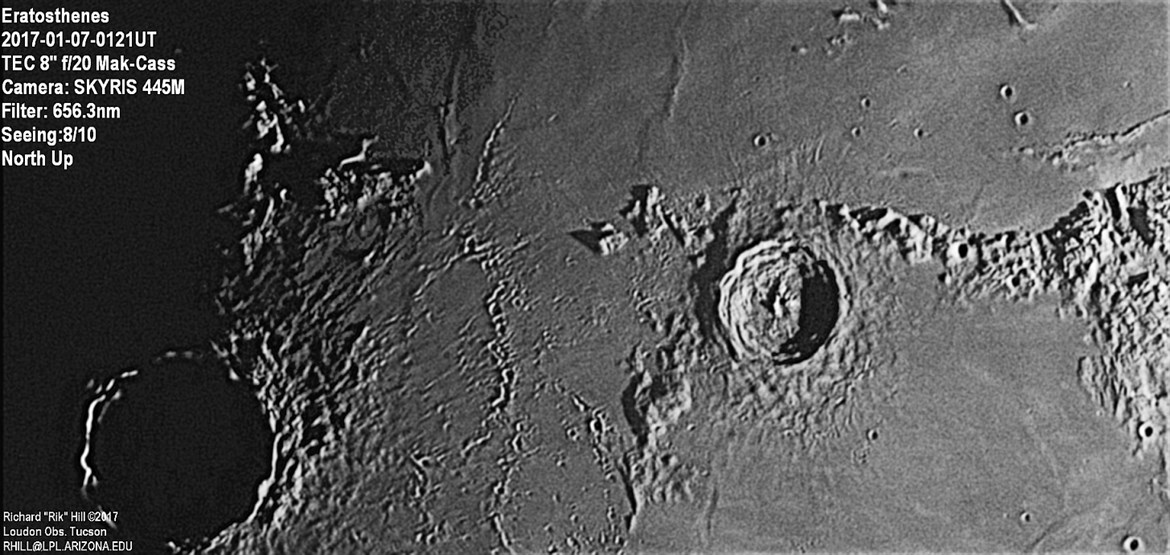It must be a rough life for any features near Copernicus. To be lost in the shadow of the 95km giant means you will always be overlooked. Such is the case of Eratosthenes, a 60km crater that would shine on its own in lesser environs. From the wonderfully terraced walls to the splendid crisscrossed pattern in the hummocky terrain of the ejecta blanket it's a sight to behold. Beyond the immediate thick ejecta are radial streaks of a thinner layer of ejected material spreading into Sinus Aestuum below and Mare Imbrium above. To the right of Eratosthenes is the curve of peaks that is tail end of the Montes Apenninus. At the far right end of the curve is Mons Wolff with deep valleys on its flanks.
To the left of Eratosthenes is the ghost crater Stadius splattered with secondary craters from the Copernicus impact that stretch to the upper edge of this image. Back in the early 1960s I had to work to see these pits in my 60mm Tasco refractor. It was not until I had my RV6 6" f/9 reflector that they were clear to me.
This montage was made from two images, each of which was a 500 frame stack from 1500 frame AVIs. They were combined in iMerge and further processed with GIMP and IrfanView.
Celestron Product used: Skyris 445M

